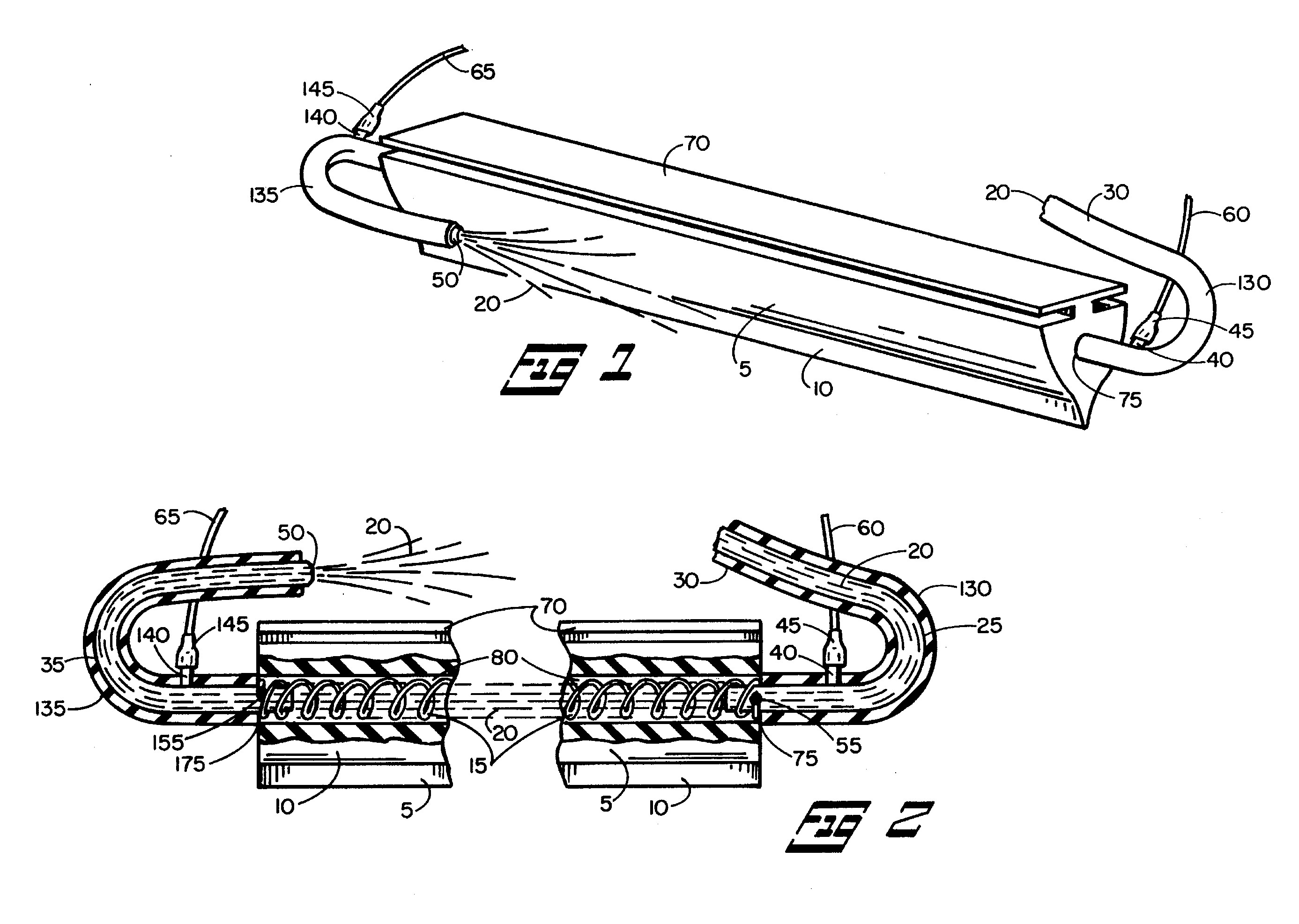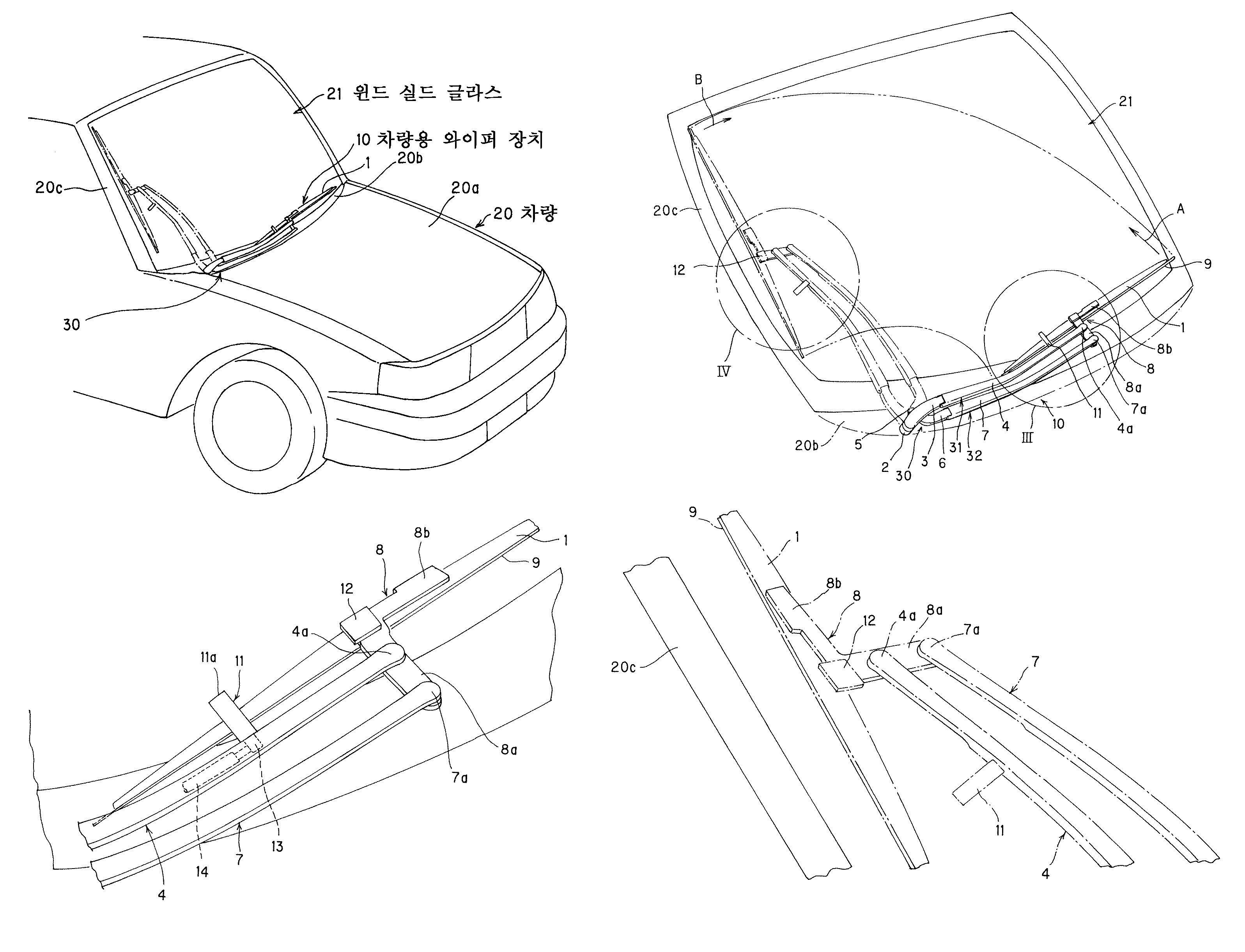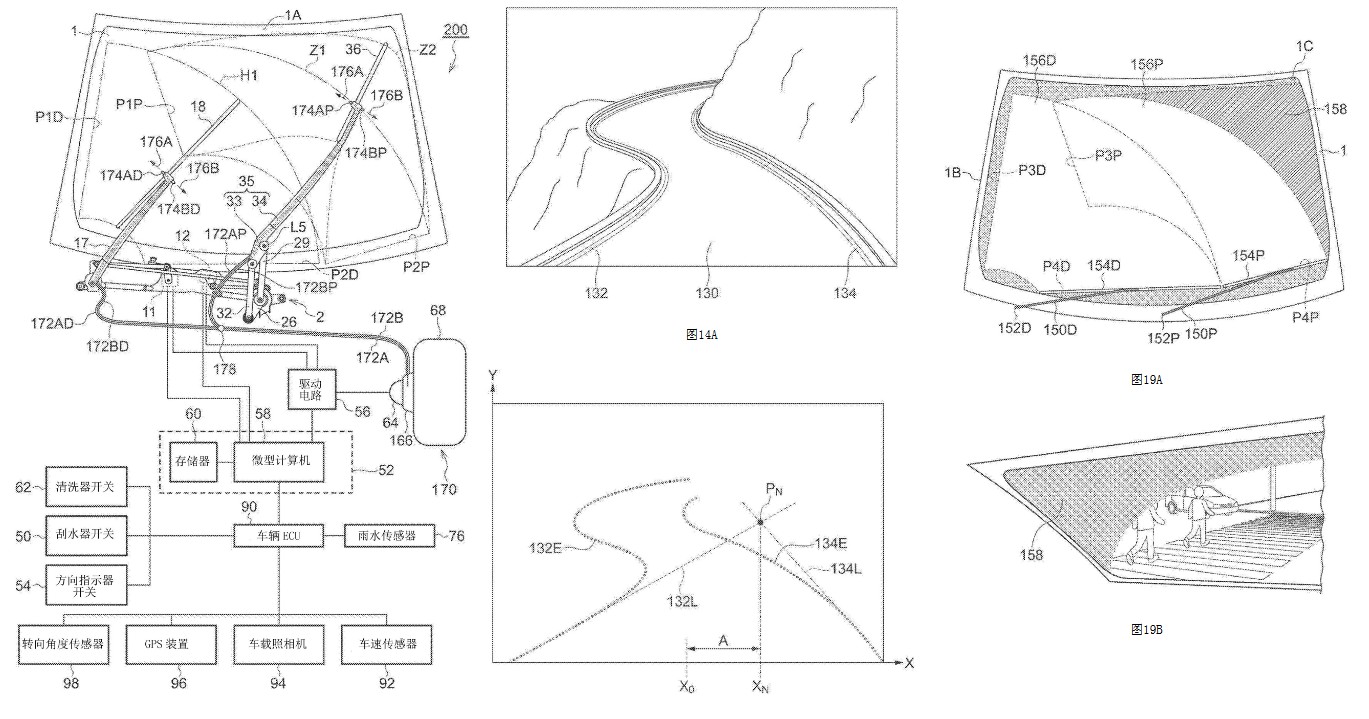The windshield wiper is a device we always see but never notice. It serves dutifully in trillion of vehicles around the world, cleaning windshields from rain and dirt, and keeping the passengers safe. In this third article in a series about windscreen wipers, we take a look at the wiper’s development in the modern era and today. In the first part we looked at the early inventors of windshield wipers and in the second part we looked at inventions that further improved the wiper’s workings. In this part, we check out some modern windshield wiper inventions.
The Into The Modern Era
Citroën
Citroën SM – rain sensing wipers in light rain.
The first important windshield wiper improvement in the modern era was the rain-sensitive intermittent windscreen wiper by French car maker Citroën in 1970. As the name implies, the invention consisted of two parts: rain-sensitivity and intermittency. That, basically, means that: 1) the wipers respond to rain and 2) they can be set to wipe with a delay by a timer. What was unique about the invention was that these two functions operated at the same time and fully automatic.
Like in earlier systems, sensors in the windshield wiper motor would measure the amount of drag the wiper blade encountered when moving over the windshield. Less drag = wet. More drag = dry. In rainy and wet conditions, the system would set the wipers on normal or full speed. When the weather got dry, the timer would activate a delay, with the wiper sweeping with less frequency. The special trick was that there were no fixed intermittency settings, the different delay possibilities were endless, and as the system worked fully automatically, the driver didn’t need to interfere. The system made for a clean window at almost all times, vastly improving safety on the road. It was first installed in 1972 on the advanced Citroën SM, a coupe powered by a Maserati motor. Citroën’s system soon became the standard for modern cars.
Ronald R. Guell & Susan K. Guell

Another important invention arrived in 1995. The inventors were once again a married couple: Ronald R Guell and his wife Susan K. Guell. In 1995 they applied for patent on a “Wiper blade assembly including heating and fluid dispensing means”. This was basically an electrically heated windshield wiper, able to “prevent the accumulation of ice, sleet or snow on the wiper blade”. The electricity got into the wiper via a spiral coiled heating element (at 15 in Fig 2). The heating element is based in a pod attached to the wiper’s blade (at 10 in Fig 1 and Fig 2 ). The heat that comes from the pod melts the cold stuff into fluid, thus making the window cleaner. But that still leaves a messy mix of melted snow and/or ice on the windshield. This mess had to be dispensed with, and that’s where the second part of the invention comes in. The wiper has an ingenious fluid dispensing mechanism, consisting of a fluid spray nozzle (at 50 in Fig 1 and Fig 2) that sprays away the melted dirt with a strong and heated water spray. The water comes from the vehicle’s existing washer fluid reservoir. The system is operated by the driver. When not in use, the pods won’t come in contact with the windshield, preventing damage to the shield and the pod itself. As always, the main purpose of the invention was to keep the windshield cleaner for longer, and therewith improving safety of the vehicle’s occupants and other traffic on the road.
Hiroaki Makihara and Others

The next invention comes to us from Japan, where it was filed in 2006. The invention is simply called “vehicle wiper device”, which doesn’t do it justice. In fact, this invention is rather mind boggling. It deals with a problem that many windshield makers and car makers have tried to solve: when a vehicle operator sprays window washer liquid on the windshield, either from nozzles on the hood or from nozzles in the wiper itself, the spray always stays on the window for a little while until the wiper sweeps. In those couple of seconds, the outward visibility is temporarily impaired. This problem still hasn’t been fully solved until today (June 2022), but many have tried to find a solution. Mr Hiroaki Makihara and his colleagues, working for Mitsubishi Motors in Japan, sought to solve it mechanically. Their intention was to shorten the time the window washer liquid stays on the windshield. To do so, they designed a whole new windshield wiper assembly with a secondary wiper (at 1 at left-bottom) positioned under the main wiper (at 1 at left-bottom). The nozzle is positioned in the main wiper (at 12 at left-top and left-bottom). When the nozzle sprays window washer liquid on the windshield, the secondary wiper is automatically deployed, able to wipe the liquid away almost immediately. When the wipers operate normally, without spraying liquid, the secondary wiper is not needed, and it will not come in contact with the windshield.
Takafumi Neki and Others

The final invention of this article comes from China, where it was invented in 2016 by Japanese and Chinese engineers working for a Chinese branch of Denso Corporation. It is called the “Wiper device for vehicle and control method for wiper device for vehicle”, a long and yet meaningless name. Too bad, because this one too is brilliant. The invention deals with another long-existing problem that has bothered the wiper industry for almost ever: the rotation of windshield wipers is set up to give the driver of a vehicle the best view possible. Very often, large parts of the windshield in front of the passenger are uncovered by the wiper’s movement, and thus remain dirty and/or wet. This is not a big problem if a vehicle drives in a straight line only, but becomes menacing in heavy weather on a twisty mountain road (center). When the driver looks to the right when he takes the corner, he actually looks through the passenger side of the windshield, where he finds his view blocked, thus endangering him, his passengers, and other vehicles on the road. Over the centuries, many tried to solve this problem by simply adding another wiper on the passenger side. This worked, but led to higher production costs and waste, as the extra wiper was always active, even when not needed, like on a straight road. Mr Takafumi Neki and his colleagues came up with a complex solution: the entire windshield system moves to the right, and back to the left, when necessary. So the wipers are always wiping the part of the window that is in the line of sight of the driver. Solved! But how do the wipers know where to go, and when? The invention uses a variety of vehicle speed sensors and sensors that measure the steering angle of the front wheels. In addition, the system connects to the vehicle’s existing navigation system. So the windshield wiper system it knows the speed, the steering, and the direction of the vehicle. All this input is fed to an assembly of sensors (left) that calculate in milliseconds where the wipers should wipe next. An example can be seen on the right-bottom, where the wipers clean the exact direction the driver is looking at; namely a pedestrian crossing running to the right, seen from the driver’s side.
The evolution of the windshield wiper is far from over. New improvements are being invented right when you read this, and in a couple of years I can likely add another part to this story. But for now, I’ll leave it at this when it comes to inventions. In the next installment of this series we will take a look at the various wiper mechanisms on modern cars, how they work, and what the pro’s and con’s are of each mechanism. See you soon.